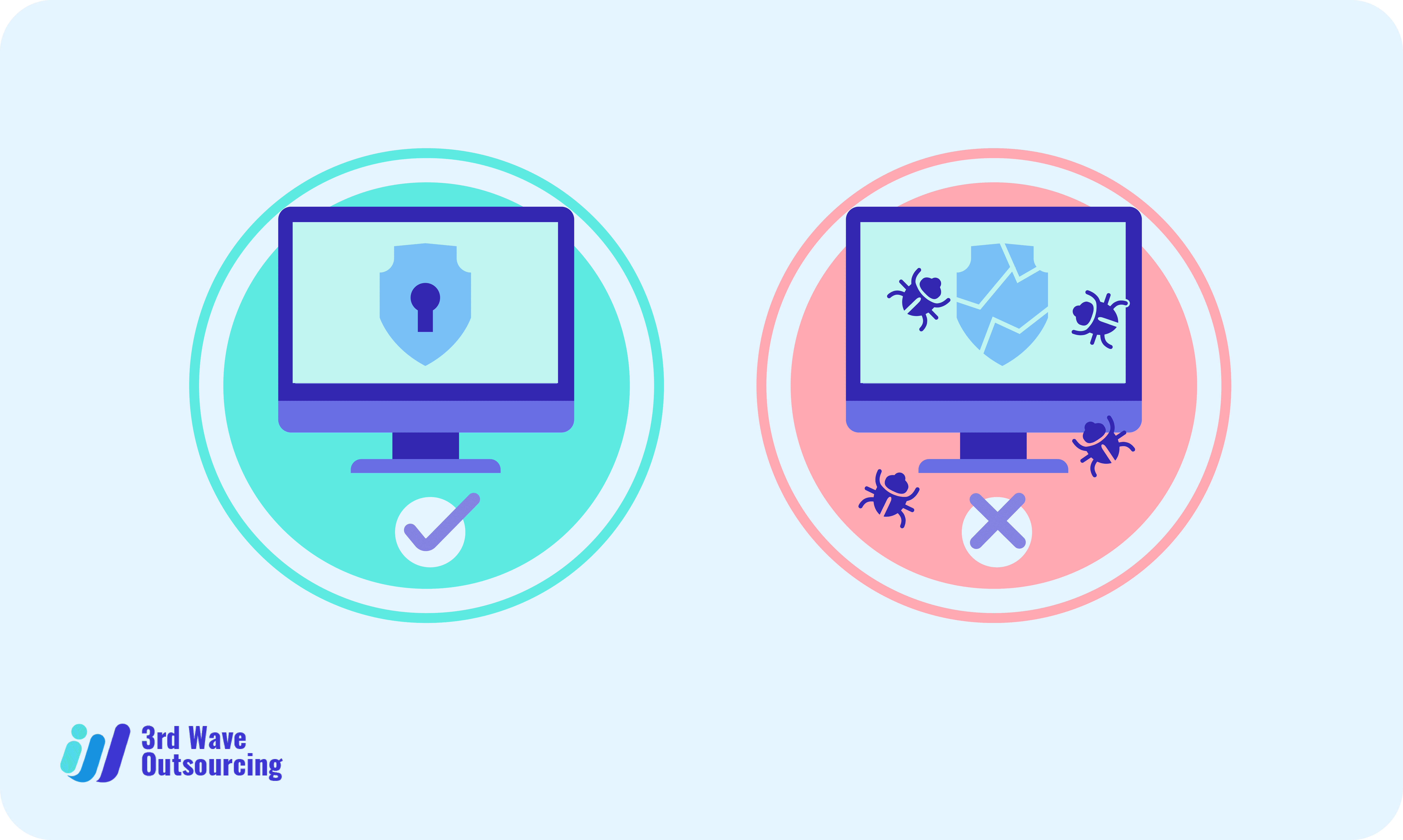The rise of remote work arrangements and outsourcing in the new normal leads to the most significant cause of security concerns: lack of proper cybersecurity measures at an employee’s home.
According to the 2019 State of the Cloud Report, 91% of companies use public cloud platforms while 72% of firms use private cloud platforms. Based on Upwork’s 2020 Future Workforce Report, 57% of teams are now at least partially remote, and 41% have transitioned fully to a work-from-home environment.
The cyberthreat landscape will further escalate the following challenges:
- Growing interconnectedness amidst varying paces of digital evolution and cloud migration journey will intensify systemic digital risk
- Limited sharing of cyber intelligence with third-party vendors and outsourced service providers will lead to a more vulnerable cyber defense mechanism
- Proliferation of Internet of Things (IoT), encryption, multi-cloud operations, and other rapid technological evolution will make cyberthreat monitoring and response more difficult
With nearly all aspect of a company’s daily operations are digital, this opens an array of new and enhanced risks, ranging from online password hacks and data breaches to malware, email phishing, and cryptocurrency ransomware attacks.
How Businesses and Outsourcing Partners Should Handle Corporate Cybersecurity
1. Treat cyber risk as a risk management issue, not an IT problem
Key elements of cyber risk management include prioritizing relevant issues and threats, determining a company’s level of risk appetite (willingness to accept some risk), and enacting initiatives to minimize risk.
2. Address cyber risk in a business context
Technical experts cannot solve the cybersecurity issues at hand without understanding the underlying commercial and organizational requirements. Organizations must find the balance between investing on technical infrastructure and complexity reduction to ensure an efficiently running and secure system.
3. Seek out and mitigate cyber risk on many levels.
Data, applications, people, and infrastructure are exposed to different types and levels of cyber threats. Use automated tools to create a comprehensive register of all these assets to better focus on those at most risk.
4. Adaptation is essential
It is not a question of if but when a cyberattack will occur. Review and adjust business continuity plans and crisis management structures for all products, processes, IT infrastructure, and organizational elements as cyberthreats grow and evolve.
5. Cyber risk calls for comprehensive, collaborative governance.
In the digital age, there are overlapping responsibilities for physical and information security, for IT (information technology) and OT (operational technology), and for in-house and external security. Organizations must accept the fact that all parts of the business – including suppliers and customers – are affected by cyber threats. Systematic governance is the best response to reduce redundancies, boost overall resilience, and solve minor daily cyberattacks.
Here are some of the best cybersecurity tips to ensure to ensure your work from home employees and your outsourcing team are protected.
1. VPN for Cybersecurity
VPN or Virtual Private Network uses a remote server to provide traffic encryption and identity protection. The network service provider assigns an encrypted IP address to allow users to access organizational information, search specific online content, and do remote tasks without fear of anonymous tracking, malicious hacking, or data breach.
2. Implement BYOD/MDM policies
Enforcing BYOD (bring your own device) and MDM (mobile device management) policies protect users from a range of attacks.
3. Password Management
Passwords are your security keys that guarantees highly secure access to sensitive data and documents. Make sure to select and create strong passwords that won’t be prone to cyberattacks. Use a combination of special characters and alphanumerical attributes that are hard to guess.
4. Secure Portals
Insecure networks, systems, and platforms will always be vulnerable to phishing attacks and cyber risks. So, here are the best ways to improve the security of your systems.
- Multi-factor authentication: Add an extra layer of protection through authentication by users on their devices.
- HTTPS protocols: Install an SSL/TLS certificate. An SSL or Secure Socket Layer scrambles the data between the browser and user’s device to keep encrypted and protected from hackers.
- WAF (Web Application Firewall): This will protect organizational applications from different cyberattacks like SQL injection, cross-site scripting (XSS), and others.
5. Follow the Best Email Security Practices
As more organizations manage a remote workforce or do business with an outsourcing team, email becomes one of the most common gateways for cyber threats. Encryption tools decrease phishing, ransomware, and impersonation attacks.
6. Keep Your Software Up-To-Date
Run software updates regularly. Where possible, consider using a secure SaaS application over installable software because the security management is in the hands of the provider.
7. Separate Work And Personal Devices
Remote employees using a device provided by the business must avoid using it for non-work-related internet activities. This will minimize cybersecurity threats and prevent sensitive business data as well as personal data from being stolen.
8. Enable Automatic Locking
Automatic locking is enabled by default on most modern devices. This is one of the simplest but most effective ways to protect unattended devices even while working from your home office and most especially when you’re in a coffee shop or a coworking space.
9. Enable Find My Device and Remote Wipe
Setting up remote wipe for your device allows you to remove all data from your mobile device should it ever get lost or stolen. This makes it much harder to access your data, no matter how much time or determination an attacker has.
10. Employee Training
A Kenna Security 2021 cybersecurity survey revealed that 31% of companies do not provide cybersecurity training to their employees. Among those who had received cybersecurity training, 61% still failed to pass a basic cybersecurity quiz.
Regular employee training and testing is the best way to ensure that your remote workers or outsourcing partners are up to date on your cybersecurity protocols and practices. Security awareness programs teaches both on-site employees and remote workers to understand vulnerabilities and threats to business operations.
While these cybersecurity tips can help prevent breaches and hacks from happening, it’s important to prepare for what happens in case a cyberattack does manage to compromise your company’s systems. Get the services of a Certified Chief Information Security Officer (CISO) to help implement critical security policies, procedures, and protocols for your business.
Want to learn more about Third Wave Outsourcing and its benefits? Watch for the upcoming e-book on Third Wave Outsourcing. Sign up here to be notified when it is released and receive related news and updates!



